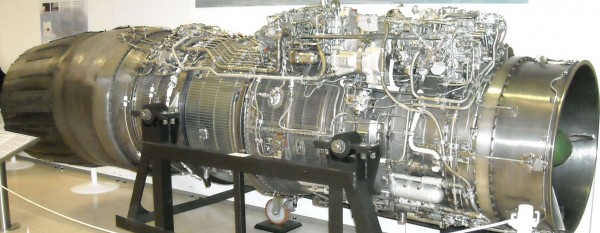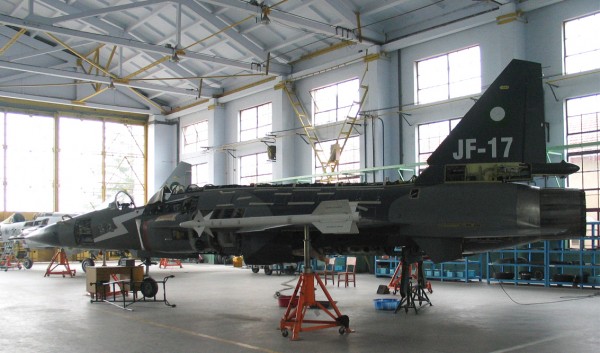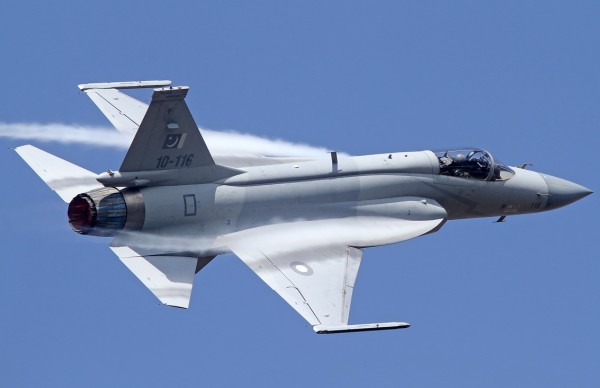Technology of JF-17 Thunder aircrafts have pulled Russia and Pakistan closer in Defence production
The technology used in Pak-China joint ventured made JF-17 Thunder fighter jets have pull Russia and Pakistan closer as JF-17 uses the engine that is actually made by Russia and China could not resell it to any country with the permission of Russia.

The JF-17 Thunder combat aircraft was jointly developed by the Pakistan Aeronautical Complex and Chengdu Aircraft Industry Corporation (PAC/CAC). Pakistan and China initiated a project for jointly developed fighter aircraft and they signed a memorandum of understanding (MoU) in 1995 for joint design and development of a new fighter. In June 1999, the contract to jointly develop and produce the Chengdu FC-1/Super 7 was signed. The project was to be a 50:50 partnership.

In 2005 China signed a $267 million contract with Russia for 100 RD-93 turbofan engines, a variant of the RD-33, to power the FC-1 Fierce Dragon fighter aircraft. Engine deliveries from Klimov and Chernyshev were to begin in 2006. It may be mentioned that the RD-93 engines is a variant of the RD-33 engine developed to power the MiG-29 fighter jet.
The RD-93 was developed by Russia’s Klimov design bureau specifically for the demands of FC-1 fighter (known in Pakistan as the JF-17 Thunder). Contract was between Russia and China with “No Resale and Re-export” clause. China went ahead and delivered two RD-93 equipped JF-17 fighters to Pakistan in March 2007 prompting India to protest the deal as a violation of the end-user agreement between Russia and China. India asked Russia to “freeze” the deal. In August 2007 Russia reportedly blocked China from re-exporting Russian RD-93 engines for Chinese-made fighters to Pakistan. Pakistan Air Force (PAF) inducted its first JF-17 squadron in February 2010 while China offered Pakistan Chinese made engines for future aircrafts. However, PAF liked performance of Rd-93 Russian made engines and decided to use same engines in its production line at Kamra where it has reportedly established a full-scale servicing and overhaul facility for the Klimov/Sarkisov RD-93 engine.

Experts believe that aircraft industry of China has had difficulties in designing and building a powerful and reliable indigenous jet engine and Chinese Air Force’s fifth-generation fighter prototypes, the Chengdu J-20 and Shenyang J-31 are flying with older Russian-made jet engines, the J-20 with the Saturn AL-31 and the J-31 with the Klimov RD-93. China has also purchased 24 Russian-made Sukhoi Su-35 multirole fighter jets with Russian made powerful AL-117S turbofan engines. Consequently, there is little reason to believe that Pakistan will procure Chinese-made engines for the JF-17 in the foreseeable future.
Pakistani engineers believe that they evaluated a number of design alternatives and now they are determined that the RD-93 in this single-engine installation is absolutely right choice for Jf-17. Now Pakistan is working extensively with the engineers from Klimov bureau in St Petersburg and RD-93 engine has turned out to be an ideal solution.
In December 2014, Russia and Pakistan announced a defense cooperation agreement, which stipulated that Islamabad would buy the the Klimov RD-93 engine directly from Moscow, instead of acquiring the hardware via China. Russia offers training of technical staff and workers, for equipment shipped back together, installation and testing of production, and other reasonable arrangements for the various components of production.





